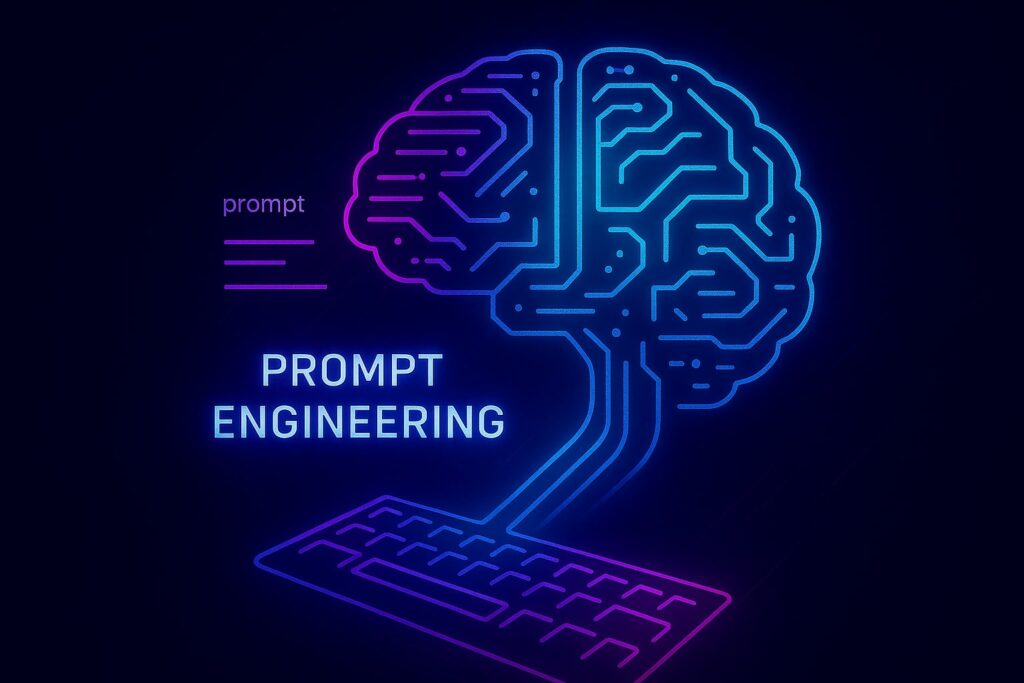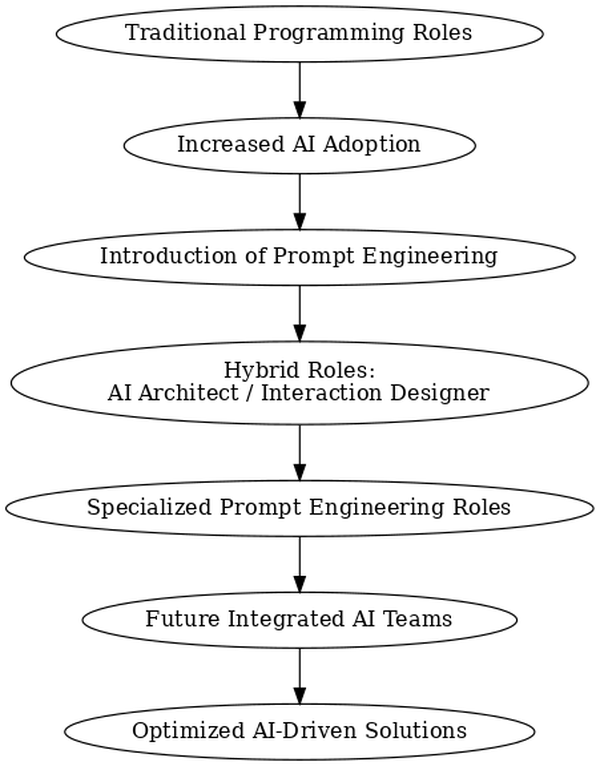Table of Contents
- Introduction
- What Exactly Is Prompt Engineering?
- The Surprising Value of a Well-Crafted Prompt
- Core Techniques Every Aspiring Prompt Engineer Should Master
- Prompt Engineering in Action: Real-World Case Studies
- The Job Market: Boom, Hype, or Something In Between?
- How to Get Started and Level Up
- Challenges and the Road Ahead
- Conclusion
1. Introduction
In today’s fast-evolving digital era, artificial intelligence has rapidly transitioned from a futuristic concept to a daily reality powering industries across the board. Yet, amid the AI revolution, a particular skill has quietly emerged as a game changer—prompt engineering. Dubbed by many as the “$100K skill,” prompt engineering is the art and science of crafting precise and effective instructions that guide AI systems, particularly large language models (LLMs), to deliver optimal results. Whether you’re a seasoned tech professional or a curious newcomer, understanding prompt engineering can empower you to harness AI in ways that significantly boost productivity and open up lucrative career pathways.
Imagine being able to communicate with a digital assistant in a language that it literally understands—a language where every nuance matters and every word counts. This article will explore why prompt engineering is fast becoming an indispensable skill, reveal the techniques behind it, and explain how you can start leveraging this expertise to transform your professional future. Let’s embark on a journey through definitions, techniques, real-world case studies, and practical advice designed to help you master the art of prompt engineering.
2. What Exactly Is Prompt Engineering?
At its core, prompt engineering is the process of designing and optimizing the input—the “prompt”—used to interact with AI models, particularly LLMs such as GPT-3, GPT-4, and others. Think of it as communicating with an exceptionally literal assistant who will follow your instructions exactly as you present them. If your instructions are vague or ambiguous, the AI’s response will reflect that uncertainty. In contrast, well-crafted prompts direct the AI to produce outputs that are accurate, relevant, and aligned with your expectations.
Prompt engineering involves several components:
- Action-Oriented Language: Using action verbs to specify the desired action helps set the tone for the AI’s response .
- Defined Output: Specifying the desired length, format, and level of detail ensures consistency .
- Context and Examples: By providing background context or examples within your prompt, you equip the AI with critical guidance that boosts output accuracy .
- Specificity: Detailed instructions, including unique definitions or key terms, make it easier for the AI model to understand and follow the desired pathway .
One can liken prompt engineering to being both a translator and a conductor. As a translator, you must convert human intent into a form that a machine can interpret, and as a conductor, you orchestrate the elements of AI responses to create a symphony of coherent, context-aware content.
3. The Surprising Value of a Well-Crafted Prompt
In today’s competitive job market, the ability to engineer effective prompts has taken on critical importance. With the rise of AI-powered tools transforming sectors ranging from customer service to creative writing, companies are actively seeking professionals who can maximize the potential of these systems.
Lucrative Earnings and Career Opportunities
Recent data suggests that prompt engineering jobs in the United States offer competitive salaries. For instance, according to ZipRecruiter as of February 2024, the average annual compensation for a prompt engineer is approximately $62,977, with reported ranges between $32,500 and $95,500—telling signs of high demand and rising importance in the field. Additionally, industry experts believe that as AI becomes more integrated into daily operations, salaries for those who can effectively harness AI capabilities may climb even higher, with some roles potentially reaching six-figure earnings.
Why Is It So Valuable?
The true worth of prompt engineering stems from its ability to streamline and optimize AI performance. When an AI model receives a clear and well-designed prompt, it can:
- Generate more accurate responses by reducing ambiguity .
- Decrease operational inefficiencies by minimizing iterative corrections .
- Enhance user satisfaction through context-rich interactions .
Consider a customer support scenario: A well-crafted prompt for a chatbot not only resolves customer queries faster but also reduces the need for human intervention. In one case study, a customer support chatbot based on prompt engineering techniques achieved a 32% improvement in response resolution and cut down escalated tickets by 50%. Clearly, the benefits are substantial and measurable.
Market Demand Across Industries
Prompt engineering is no longer confined to tech giants or AI startups. Industries such as healthcare, finance, education, e-commerce, legal tech, and even marketing are increasingly recognizing the value of an effective AI interface. Whether it’s automating repetitive tasks or generating creative ideas, mastering the art of prompt engineering can open doors in a multitude of professional environments.
4. Core Techniques Every Aspiring Prompt Engineer Should Master
Developing high-impact prompts requires a toolkit of diverse techniques. Aspiring prompt engineers should familiarize themselves with the following core strategies:
4.1 Role-Playing
Role-playing involves instructing the AI to adopt a specific persona, such as an expert in a particular field, a customer service representative, or a creative writer. For instance, you might prompt the system with, “You are a support agent. Answer questions using only the product manual and policy below, responding concisely and politely”. This technique frames the AI’s response, lending it context-specific expertise and a consistent tone.
4.2 Chain-of-Thought (CoT) Reasoning
Chain-of-thought prompting encourages AI models to break down complex reasoning into smaller, manageable steps, which ultimately leads to more structured and comprehensive outputs. By guiding the AI to “show its work,” you enhance clarity and create responses that are easier to verify and iterate upon.
4.3 Few-Shot Learning
Few-shot learning involves providing the AI with a handful of examples demonstrating the desired input-output pattern before executing the final prompt. These examples serve as a template that the model can emulate, ensuring that the final output adheres to the specified format, tone, and style.
4.4 Zero-Shot and One-Shot Techniques
Zero-shot prompting requires the AI to generate a response based solely on the prompt without any additional examples, whereas one-shot prompting offers a single example. Each method has its merits: zero-shot is ideal for straightforward requests, while one-shot can provide that extra contextual boost when needed.
4.5 Style Unbundling
Style unbundling involves decoupling the stylistic elements of an expert’s communication and instructing the AI to adopt those elements selectively. For example, you might instruct an AI to “explain this concept in the concise and factual style of a senior software developer.” This technique can help generate outputs that are both informative and engaging.
4.6 Quantification and Specificity
Whenever practicable, integrating numeric constraints or specifying output details can significantly enhance clarity. Phrases like “list three benefits of remote work” quantifiably limit the range of responses and help the AI focus on clear, actionable information.
5. Prompt Engineering in Action: Real-World Case Studies
A picture is worth a thousand words. In this section, we’ll explore several real-world applications of prompt engineering that underscore its transformative potential.

5.1 Enhancing Customer Support Chatbots in E-Commerce
Imagine an online retailer looking to streamline its customer service. By integrating a prompt-engineered chatbot powered by an LLM, businesses can achieve dramatic improvements in query resolution speed. In one case study, a chatbot trained on historical customer queries—using meticulously designed prompts—delivered contextually relevant answers. The result? A 32% increase in resolution rates and a 50% reduction in tickets escalated to human agents.
5.2 Fueling Creativity with a Writing Assistant
In the creative realm, prompts are instrumental in overcoming writer’s block. A creative writing assistant, built using advanced prompt engineering techniques on the Hugging Face Transformers library, provides writers with dynamic suggestions tailored to their style. By leveraging few-shot examples and persona-driven prompts, the system generates fresh narrative ideas that spark creativity and elevate productive output.
5.3 Multilingual Customer Service Solutions
For global businesses, offering customer service in multiple languages is essential. Through prompt engineering, a multilingual model—trained on a diverse dataset using Sentence Transformers—can respond to queries in various languages while respecting cultural nuances. Carefully crafted prompts ensure that the language model accurately discerns the context and provides error-free, culturally appropriate translations.
5.4 Legal Tech and Structured Prompts
High-stakes industries like legal tech require an airtight methodology for information extraction. In such scenarios, prompt engineering is used to extract specific information, such as payment terms, liability clauses, and contract durations. By employing structured prompts—such as “Extract the following: Payment terms, liability clause, duration. Return results as bullet points with clause references”—legal professionals can efficiently summarize and analyze contracts with a reduced margin of error.
Visualization: Comparative Table of Case Studies
| Application Domain | Prompt Engineering Approach | Results and Benefits |
|---|---|---|
| E-commerce Customer Support | Fine-tuned prompts based on historical query data | 32% improvement in resolution; 50% fewer escalations |
| Creative Writing Assistant | Few-shot and persona-driven prompts to generate creative suggestions | Enhanced productivity; alleviation of writer’s block |
| Multilingual Customer Service | Structured multi-language prompts using Sentence Transformers | Accurate responses across multiple languages |
| Legal Tech | Role-specific prompts for contract analysis | Efficient extraction of critical contract details |
Table 1: Comparative Analysis of Real-World Prompt Engineering Case Studies
This table clearly illustrates how tailored prompt engineering approaches across various domains yield measurable improvements in efficiency and output quality.
6. The Job Market: Boom, Hype, or Something In Between?
There’s been considerable debate about whether prompt engineering is simply a passing trend or a foundational skill set that will shape the future of human-machine interactions.
6.1 Demand and Salary Trends
The growing adoption of AI technologies has fueled significant demand for professionals skilled in prompt engineering. According to several reports, and as noted earlier by ZipRecruiter, prompt engineer roles command competitive salaries averaging around $62,977 annually, with the potential to reach even higher in certain positions. Furthermore, market research forecasts an explosive growth in the prompt engineering market—from $280 million to $2.5 billion by 2032—underscoring the rapidly expanding opportunity landscape.
6.2 Evolving Job Titles and Roles
A critical observation by industry insiders is that while the title “Prompt Engineer” is gaining traction, many organizations integrate prompt-related responsibilities into broader roles. For example, responsibilities might merge with those of AI architect, interaction designer, or even as part of a product manager’s remit in the AI sphere. This evolution is natural in emerging fields, where specialized skills eventually become embedded into hybrid roles rather than remaining confined to a single job title.
6.3 Addressing Skepticism
Critics often suggest that prompt engineering is overhyped or that it is merely an ancillary element of traditional programming or technical writing. Some even claim that many job postings labelled “Prompt Engineer” are actually traditional programming roles with a dash of prompting on the side. While these criticisms have merit—especially in industries where AI is still evolving—the unique skill set and measurable impact of well-designed prompts make a compelling case. As AI models grow in complexity, the need for precise, well-delineated prompts becomes increasingly vital, ensuring that the model outputs remain biased toward correctness and stability.
Visualization: Mermaid Diagram – Evolution of Prompt Engineering Roles
Figure 1: Evolution of Prompt Engineering Roles and Integration in AI Teams
This flowchart demonstrates the progression from traditional roles to specialized positions, illustrating how prompt engineering is being integrated into various aspects of AI development and management.
7. How to Get Started and Level Up
Breaking into prompt engineering—or enhancing your existing skills in this field—requires a combination of learning foundational theories, practical experimentation, and continuous refinement of your techniques.
7.1 Building a Strong Foundation
Begin with basic research on AI fundamentals and how LLMs function. Numerous free and paid resources are available online, including guides from Google Cloud, DAIR.AI, and Anthropic, as well as dedicated courses on platforms like Coursera and Udemy. Start by understanding:
- How AI models interpret prompts
- The importance of context and examples in output generation
- The role of specificity in driving accurate responses
7.2 Practical Experimentation
Learning by doing is paramount. Utilize tools like ChatGPT, Claude, and Vertex AI’s free trials to test your own prompts. Experiment with various methods:
- Try zero-shot prompts for simple queries.
- Implement one-shot and few-shot techniques by providing clear examples.
- Incorporate chain-of-thought prompts and observe how step-by-step reasoning impacts the final output.
7.3 Documenting and Iterating
Keep a portfolio of your prompt designs and their corresponding results. Monitor changes, analyze output consistency, and refine your prompts based on observed performance. Iteration is key—rarely is the first attempt perfect, so be prepared to refine your approach iteratively until you achieve the desired results.
7.4 Learning from the Experts
Engage with communities and resources that focus on advanced prompt engineering techniques. Notable experts, such as Mike Taylor, regularly share insights into effective prompt design and offer courses, books, and templates which can significantly shorten your learning curve. Join online forums, participate in webinars, and collaborate with peers to continuously evolve your approach.
Visualization: Table – Steps to Master Prompt Engineering
| Step | Description | Recommended Resources |
|---|---|---|
| Research Basics | Understand AI fundamentals and LLM behavior | Google Cloud guides, DAIR.AI, Anthropic resources |
| Experimentation | Test various prompt techniques using free AI trials | ChatGPT, Vertex AI, Hugging Face platforms |
| Document and Iterate | Maintain a portfolio of prompt experiments and track improvements | Personal documentation, collaborative forums |
| Learn from Experts | Leverage courses, books, and community insights | Mike Taylor’s resources, online AI communities |
Table 2: A Step-by-Step Guide to Mastering Prompt Engineering
8. Challenges and the Road Ahead
No emerging discipline is without its challenges. While prompt engineering offers tremendous promise, several potential issues merit attention.
8.1 The Complexity of AI Interpretations
Despite significant advances, AI models can still misinterpret vague or ambiguous prompts. Even slight variations in phrasing may lead to vastly different outputs. This inherent sensitivity necessitates precision in every instruction—an art that takes time to master.
8.2 Evolving Models and Changing Requirements
AI is a rapidly moving target. As models evolve—for instance, from GPT-3 to GPT-4 and beyond—the optimal techniques for prompt engineering may also evolve. What worked efficiently yesterday might require tweaks tomorrow as models get updated or as new capabilities are introduced. Continuous learning and adaptation are therefore inevitable parts of a prompt engineer’s career.
8.3 Ethical Considerations
An often-overlooked aspect of prompt engineering is ensuring that prompts are not only effective but also ethical. Poorly constructed prompts can sometimes lead to biased, misleading, or even harmful outputs. It is important for prompt engineers to be vigilant about:
- Mitigating biases inherent in training data
- Preventing manipulation or misuse of AI outputs
- Ensuring transparency in how outputs are generated and verified.
8.4 The Future Integration of Automated Prompting
A debated topic is whether future AI models might eventually self-optimize their prompts or if prompt engineering will always require human oversight. While automated improvements may occur, there is a strong argument that human intervention—known for creativity, intuition, and ethical judgment—will remain indispensable. The role of a prompt engineer may evolve into one focused on supervising and fine-tuning automated outputs rather than creating every prompt manually.
9. Conclusion
Prompt engineering represents an exciting frontier in the AI revolution—a transformative skill that bridges human intent and machine intelligence. It is not merely about typing in commands; it’s about crafting structured, context-aware communication that unlocks the full potential of generative AI models. Through precise techniques such as role-playing, chain-of-thought reasoning, few-shot learning, and style unbundling, prompt engineers have demonstrated tangible benefits across industries—from reducing customer service response times to sparking creative breakthroughs and optimizing legal document analysis.
Key Takeaways
- Value and Demand:
- Prompt engineering is emerging as a high-value skill, with competitive salary ranges and a growing market forecasted to rise from $280 million to $2.5 billion by 2032.
- It is increasingly utilized across sectors, including technology, healthcare, finance, and e-commerce.
- Core Techniques:
- Successful prompt engineering relies on methods such as role-playing, few-shot learning, chain-of-thought reasoning, and quantification.
- Practical application of these techniques has been validated in real-world case studies, which show significant improvements in output quality and operational efficiency.
- Career Insights:
- While some skepticism exists regarding job titles, the underlying skills are becoming an integral part of roles like AI architect and interaction designer.
- Continuous learning and practical experimentation are essential to staying relevant in this fast-evolving field.
- Future Outlook:
- The challenges of interpreting AI outputs and ensuring ethical constructions remain, but the benefits of well-structured prompts far outweigh the drawbacks.
- As AI models advance, the human touch in designing, supervising, and refining outputs will continue to be critical.
If you’ve ever wondered how to unlock AI’s true potential, now is the perfect time to delve into the art of prompt engineering. Start by exploring free online courses, experimenting with your own prompts using platforms like ChatGPT or Vertex AI, and joining communities of AI enthusiasts who are shaping the future. Whether you aim to propel your career into the realm of high-paying AI roles or simply enhance your productivity, mastering prompt engineering is a journey well worth embarking on.
Final Thoughts
Prompt engineering isn’t just a technical skill—it’s a catalyst for innovation. By honing this talent, you position yourself at the forefront of the AI revolution, capable of transforming ordinary interactions into extraordinary outcomes. Embrace the challenge, stay curious, and let your newfound expertise drive you towards a future where AI works exactly the way you envision.
Figure 1, Table 1, and Table 2 above underscore the tangible benefits and structured approaches embodied in prompt engineering. The evolution of roles depicted in the mermaid diagram further illustrates how this skill integrates into broader AI development teams.
In a world where communication with technology becomes ever more essential, the $100K skill of prompt engineering might just be your ticket to the future—one where precision in language leads to breakthroughs in innovation and efficiency.
By embracing prompt engineering, you not only learn to speak the language of AI but also gain the ability to command it. This transformative skill offers the opportunity to unlock new levels of productivity and creativity in virtually every industry. Start your journey today and join the vanguard of professionals turning simple prompts into powerful, impactful actions.


 How Mobile Technology Is Transforming Sports Betting Experiences
How Mobile Technology Is Transforming Sports Betting Experiences






